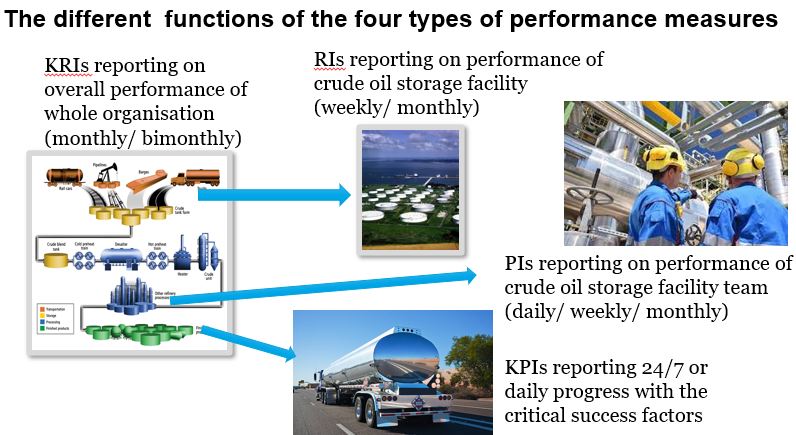Your cart is currently empty!
The four types of performance measures
From my research over the past 30 years I have come to the conclusion that there are four types of performance measures, and thus it is a myth to consider all measures as KPIs. These four measures are in two groups: result indicators and performance indicators.
I use the term result indicators to reflect the fact that many measures are a summation of more than one team’s input. These measures are useful in looking at the combined teamwork but, unfortunately, do not help management fix a problem, as it is difficult to pinpoint which teams were responsible for the performance or nonperformance.
Performance indicators, on the other hand, are measures that can be tied to a team or a cluster of teams working closely together for a common purpose. Good or bad performance is now the responsibility of one team. These measures thus give clarity and ownership.
With both these measures some are more important, so we use the extra word “key.” Thus, we now have two measures for each measure type:
Key result indicators (KRIs) give the board an overall summary of how the organization is performing.
Result indicators (RIs) tell management how teams are combining to produce results.
Performance indicators (PIs) tell management what teams are delivering.
Key performance indicators (KPIs) tell management how the organization is performing 24/7, daily, or weekly in their critical success factors, and by taking action management is able to increase performance dramatically. Many performance measures used by organizations are result indicators and it is thus, no wonder, why reporting these measures has not improved performance.

There are a number of important key learning points with regards the great misunderstanding about KPIs which include:
- Clarity over the different types of measures, result indicators and performance indicators
- The definition of a KPI
- British Airways late planes KPI story
- The seven characteristics of KPIs
- The 10/80/10 rule
- The lead or lag debate is finally buried
- The need to have more current- and future-oriented measures that act like a fence at the top of the cliff
- Avoid measuring too much and measuring too late
To help you understand these issues I have provided you with the entire Chapter 1 “The Great Misunderstanding’ from Key Performance Indicators 4th Edition.
This information has been extracted from David Parmenter’s Key Performance Indicators (4th Edition) Pages 3-23, which is the highest rated KPI book on Amazon.
To get my latest work
Buy my implementation guides and accompanying electronic media to get you started.
How to implement winning KPIs (180 page Whitepaper + electronic templates)
Finding your Organization’s Critical Success Factors – implementation guide (Whitepaper 115 pages+ electronic templates)
and buy the Database of Measures and Associated Success Factors 4th Edition